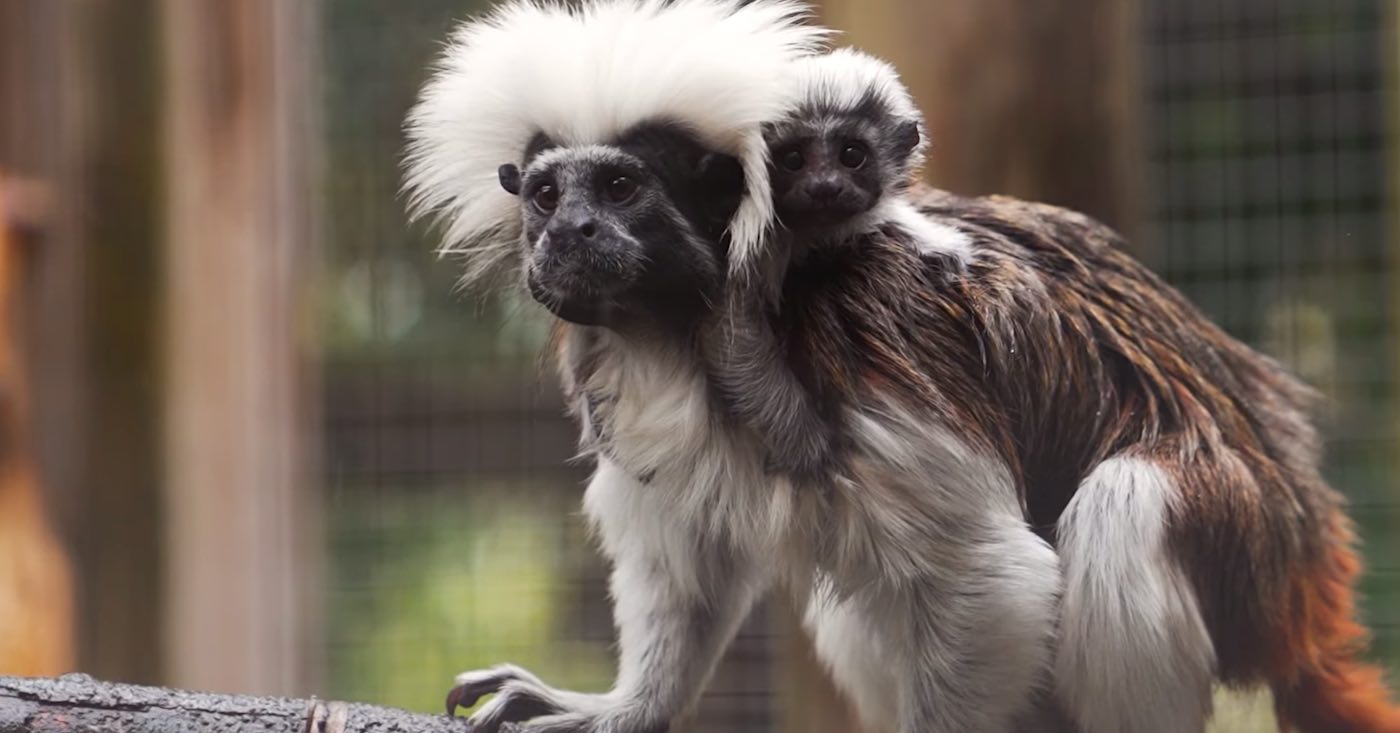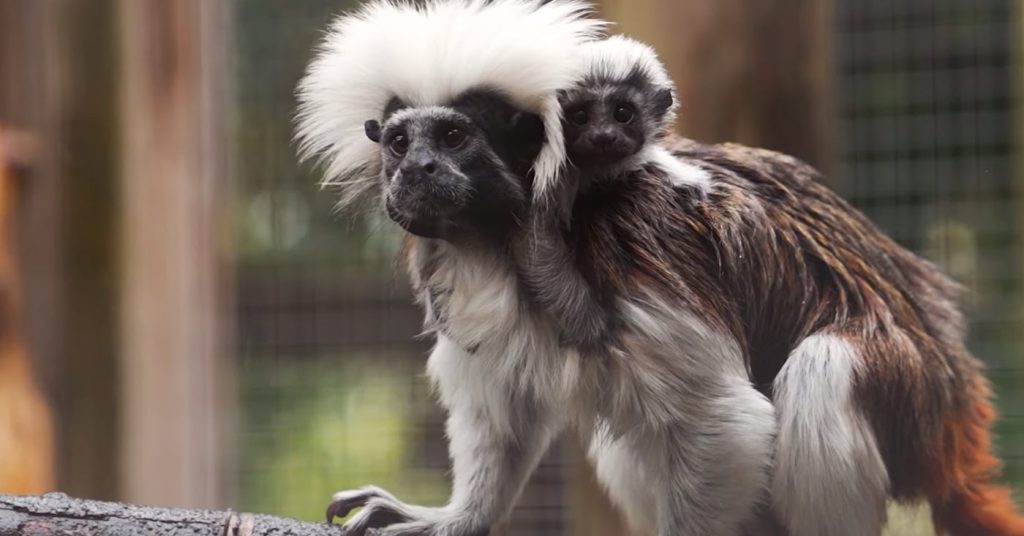
Adorable photographs are celebrating new births for one of the world’s most endangered primates. All were born recently to lucky zoos in America and England participating in a species survival program. One Michigan location even welcomed twins.
At the Chester Zoo in Cheshire, England, weighing-in about the same as an egg from your kitchen, a tiny critically endangered cotton-top tamarin arrived last month, born to first-time parents.
Zoo conservationists say they are “overjoyed” at the new arrival, which they hope will play a vital role in the future survival of one of the rarest monkey species.
There are only about 2,000 of these miniature monkeys breeding in the wild.
The new baby is only 4 inches tall from head to tail (10cm) and weighs around 1.4 ounces (40g). Until its first medical check-up at 6 months, its sex can not be determined, so zookeepers are not talking yet about naming the youngster.
“We strongly suspected that Treat was pregnant from our regular monitoring of her weight and seeing her belly swell,” said Siobhan Ward, primate keeper at Chester Zoo.
“But it was a fantastic surprise nonetheless to see a tiny little ball of fluff clinging onto her back one morning.”
A social species wherein both males and females (and siblings) help care for the young, Ward says that the father, 5-year-old Leo, and mother, 3-year-old Treat, have taken to parenthood “brilliantly”.
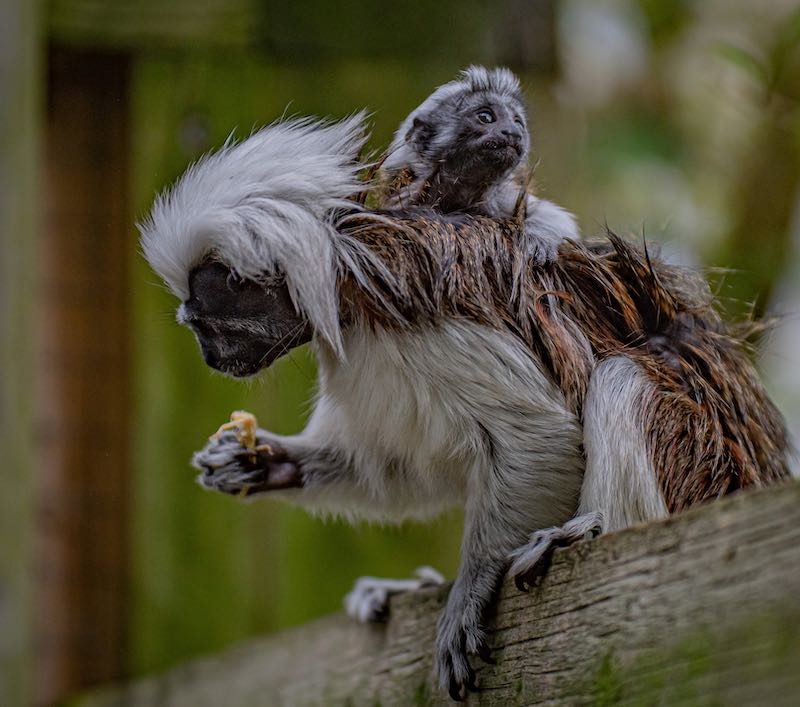
POPULAR: Tiny Yorkshire Terrier Detects Breast Cancer in Woman, Jumping Up and Down on Her Chest in Alarm
The baby will be carried around for the next six months. “But it’s actually dad who’s been doing most of the carrying so far, passing it to mum for feeds while he stays protectively close by.”
In order to help save the species, Chester Zoo only recently started caring for them at the zoo, so this was the first cotton-top tamarin to be born there in 22 years.
“We’re completely overjoyed. It’s incredibly special to be able to see the little one so soon after its birth, and after opening its eyes for the first time.”
These tamarins have an iconic look with their voluminous plume of white fur on their heads. The crest raises up whenever then they get excited, or feel that they need to warn off danger, making them look bigger and more intimidating.
RELATED: ‘Comical-Looking’ Bat Thought to Be Extinct is Found Again After 40 Years in Dense Rainforest (LOOK)
They’re highly intelligent and social animals that can live for around 25 years, especially within a zoo’s safe harbor. The animals use more than 38 different calls to communicate to one another, defend their territory, call their young and warn the group of predators.
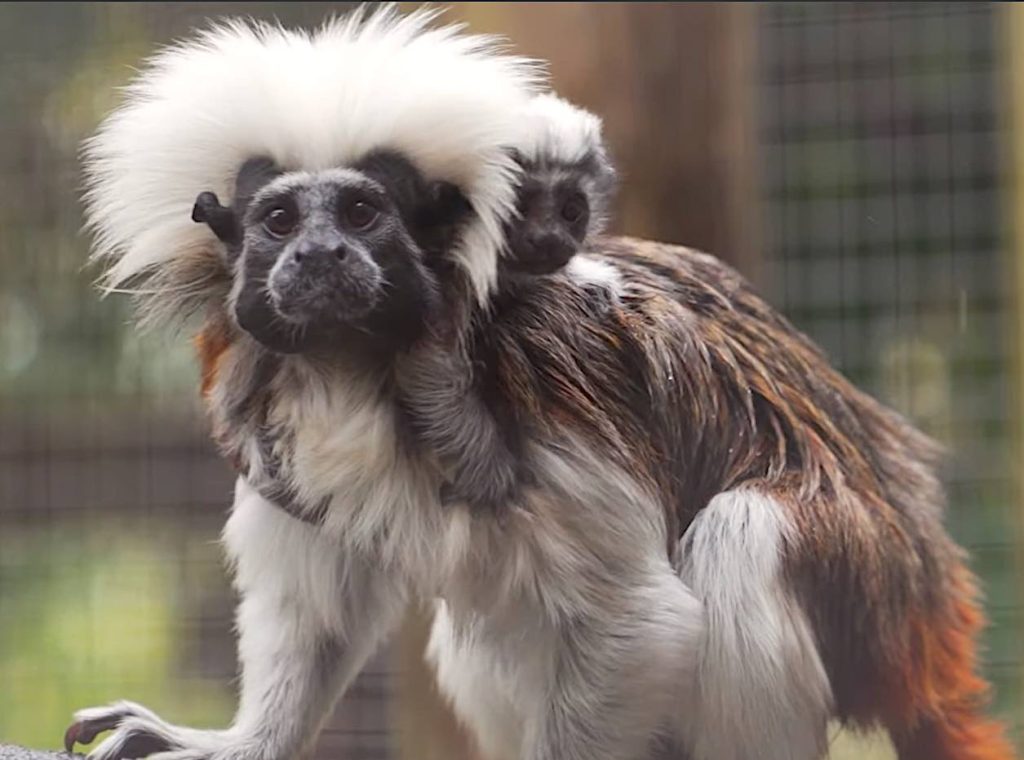
The declining number of cotton-tops is due to habitat loss—commercial logging for agriculture, paper, and timber industries—and also the illegal wildlife trade. Native to tropical rainforests of Central and South America (predominately Colombia), only about five percent of their original habitat now remains.
That’s why conservationists here in Cheshire are part of an international effort involving many zoos, which is aiming to save the species from possible extinction.
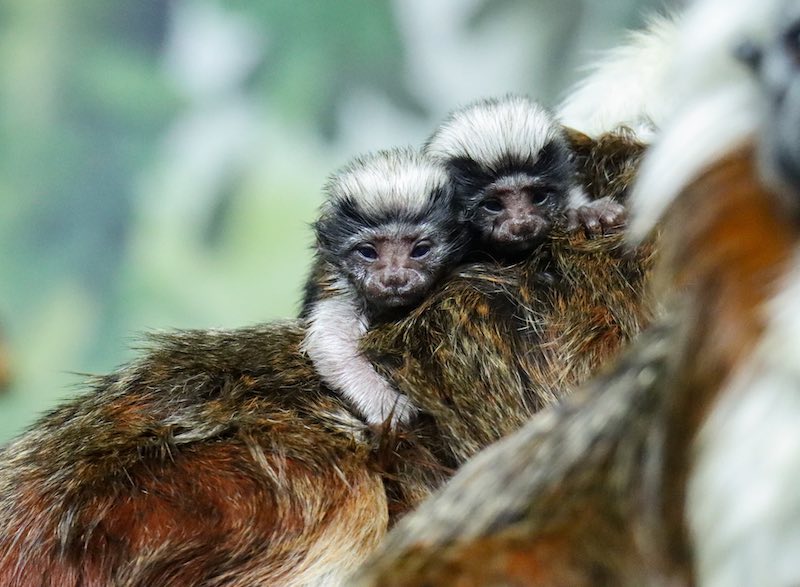
Last month in the U.S., several successful births of cotton-top tamarins were announced—including twins born at the John Ball Zoo in Grand Rapids, Michigan.
Another new baby named Ash is being raised by parents at the Idaho Falls Zoo—the first zoo in the state of Idaho to be accredited by the Association of Zoos and Aquariums so they can proudly participate in over 40 Species Survival Plans, like the one that is boosting numbers of little tamarins, such as Ash.
WATCH the newborn twins clinging to father (and older siblings) in Michigan…
SHARE This Conservation Success Story—And Cuteness Overload—on Social Media…




















